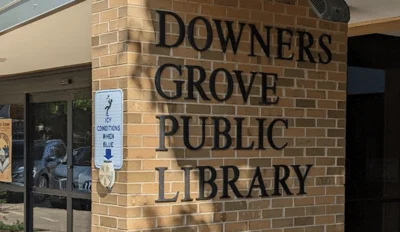The amount of participants in Illinois high school sports mostly stayed steady over the last two academic years.
The National Federation of State High School Associations recently posted data on the Illinois High School Association's (IHSA) website noting that Illinois was fourth nationally with 344,143 participants in high school sports during the 2015-16 academic year.
That number is up slightly from 2014-15, which had 340,972 participants. Nationally, there was an all-time high of 7,868,900 participants, up 61,853 from the previous year.
“Illinois has ranked fourth in the country in overall participation for at least the past decade, so the numbers overall are consistent with national trends,” Matt Troha, IHSA assistant executive director, said in an email interview.
Texas topped the 2015-16 list with 809,075 participants, followed by California (802,117) and New York (372,772).
The number of participants per gender also reached all-time highs nationally. There were 4,544,574 males — an increase of approximately 25,000 after a decline — and 3,324,326 females participating in sports last year. The number of female participants rose for the 27th straight year. The most-popular female sport last year was track and field with 485,969 participants.
“The growth in girls’ sports participation has fueled the continued national growth, as more and more opportunities create more participants,” Troha said. “Several girls sports continue to grow, as cross-country, golf, tennis, track and field, and volleyball all saw some growth since 2008-09.”
Football saw a drop last year in both participants and programs in the state. There were 554 programs with 44,451 participants in 2015-16, compared to 575 and 46,896 in 2014-15.
Nationally, there were 1,083,308 participants last year in 11-man football, making it the most popular sport for boys. That number was down slightly from the previous year after a dip of almost 10,000 participants from 2013-14 to 2014-15.
Troha said there is some correlation between the drop in football participation and concerns over concussions in the sport. Yet he added that he didn't know if that was the main or lone factor for the decrease.
“Football participation had reached its peak after years of growth in the early 2000s, so we understood it would eventually start to drop and level off, which I think we are starting to see now as parents and student-athletes have become better educated on the sport and its risks,” Troha said.
He added that sport specialization has also had an impact on males' participation overall.
In Illinois, lacrosse saw a big jump in participation last year. The male side of the sport had 89 programs with a total of 2,727 participants, while the female side had 63 programs and 1,749 participants.
The year before, 82 schools had boys' lacrosse teams with a total of 615 participants, while there were 58 girls' programs with 358 players.
The IHSA will start boys' and girls' state lacrosse series in the spring of 2018, Troha said, and many schools have transitioned their club lacrosse teams to school teams.
“The growth of the sport here in Illinois, and around the country, is undeniable, and I think we will continue to see it rise,” he said.
Overall, Troha said he expects the state's participation numbers to drop incrementally in the coming years.
“We are a state with many small high schools, and many of them continue to consolidate or co-op for sports, which tends to decrease numbers,” he said. “Additionally, the current economic climate makes it more difficult for schools to sustain and add programs.”
For more information on participation, go to nfhs.org.






 Alerts Sign-up
Alerts Sign-up